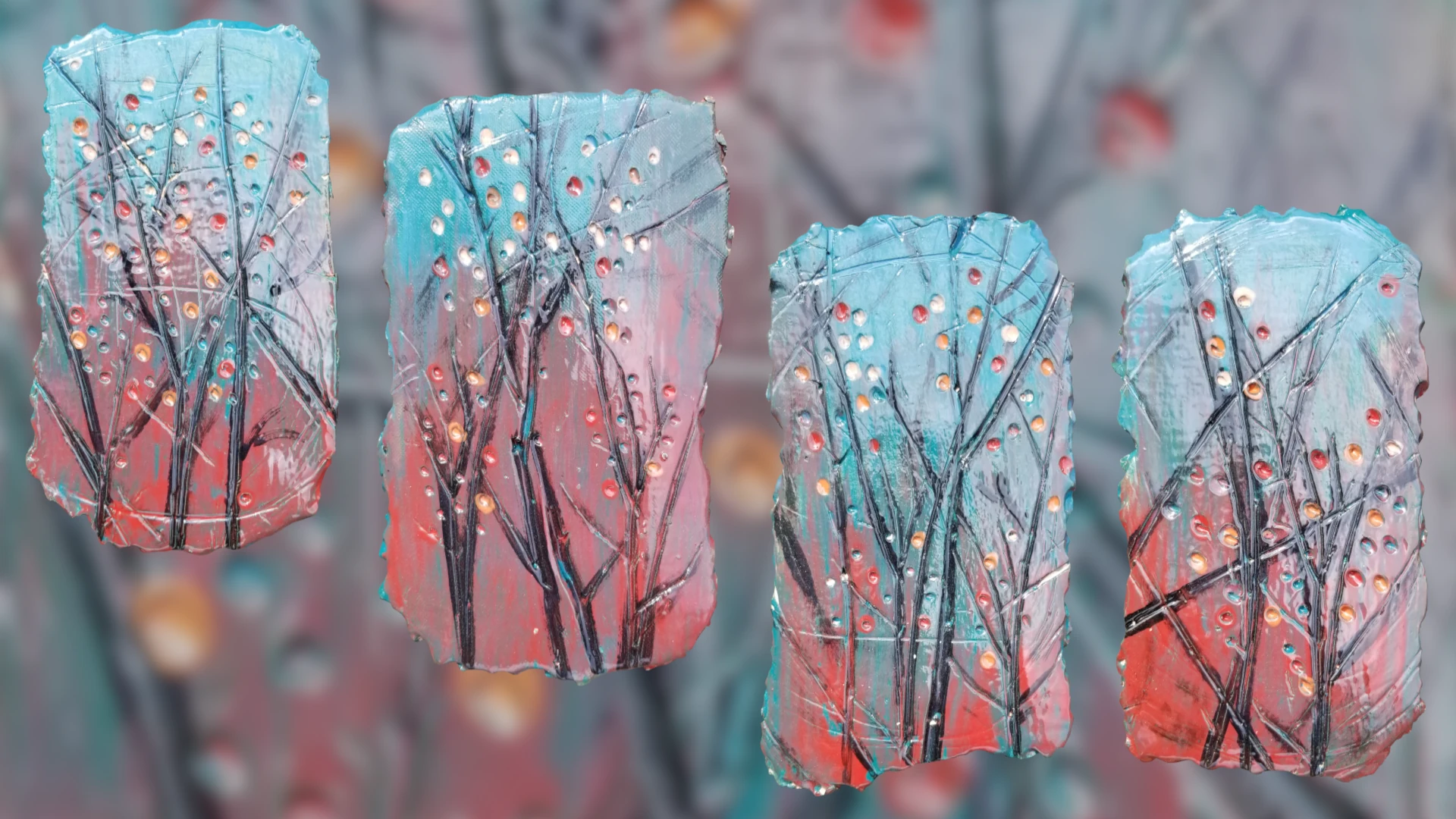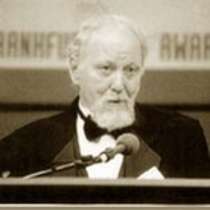[smartslider3 slider=2]
Fabrice Poussin teaches French and English at Shorter University. Author of novels and poetry, his work has appeared in Kestrel, Symposium, The Chimes,La Pensee Universelle, Paris and many other magazines. His photography has been published in The Front Porch Review, the San Pedro River Review as well as other publications.
A conversation between Fabrice and David Michael Jackson of Artvilla
David:
Like me you write poetry and make art. I have also found that my fellow musicians are good at art…..
I feel that all three are visual. Like jazz, they all start off not knowing where they are going and often end up somewhere unexpected not quite knowing how they got there.
Do you feel a connection between the poetry and the art?
Fabrice:
I most definitely agree. Baudelaire speaks of “correspondences,” within which everything becomes connected.In fact, I believe that my personal exploration is an attempt at strengthening these connections. And I do love jazz by the way.
David:
Music is social, everyone finds expression within a strict structure…It’s a club where your skill gets you in……art is an individual activity and inclusion is subjective….Is it a club where your friends get you in?
Fabrice:
That is both an excellent and difficult question to answer. There is little doubt that your skills get you in the arts scene. I would suggest that if your friends get you in, then perhaps it becomes some sort of artistic nepotism. I would hope that those who get you in may become your friends later, but I would wish that friendship is not what will get anyone in at the beginning. While friends (as mine did) may suggest avenues and ways to “get in,” none should do more than that. A friend of mine is in fact very worried as to the current state of the publishing world, in which he believes knowing the people on the editing board is more important to the magazine than the quality of the work submitted. I think that not having friends in the circle is, as it is in essence impartial, a much better judgment or evaluation of the work of the artist. It often seems that to be successful one needs to know the right people, people who excel at marketing any product, then one is in, regardless (to some extent) of the real and potential canonic value of his or her work. Yes, the artist is often a loner and he/she can receive some important feedback and be influenced by others, but ultimately being alone as an artist is probably essential. His or her work may not become very popular as a result, but one’s integrity to one’s art should always prevail.
David:
I understand. I’m part of the problem. My training is in Mechanical Engineering. I’m the ultimate outsider artist who decided to be the Magazine of Modern Art, Poetry and Music and let myself in. Now I’m contacted by Artsy and DavidZwirner Gallery because they want a link. The engineer has hit every keyword, it seems, with my poems and art. I’ve still never published a poem or been in a gallery. Artvilla is a record label in “The Orchard”….My spoken word is in Itunes and all of them, I have a blue checkmark on my Facebook Page. It’s “verified”….yet without Zwirner, The New York Times or Artsy or some other club to say so, I’m magnetic spots on a hard drive….
Multiply me by 10,000 and that’s the scene.
The engineer Dave did a series on artists. I have a page on hundreds of artists…..40 Renaissance, 40 Post, 30 Impressionists, 30 Post, 20 cubists, 40 abstract expressionists…….Modern Famous Artists? 450
Everybody is a writer, a poet, has a book. There are so many musicians and we don’t know their names.
My question:
Is it crowded in here? Have we lost our filters?
Fabrice:
Funny you mentioned being an engineer. I used to know a mechanical engineer who was also a jazz musician. He said something I will never forget, although I cannot remember his exact words. It does provide help to the question you pose however.
Is it crowded in here? Absolutely! But is that a bad thing? by all means no! I discuss this with friends from time to time. We speak of the works left behind by those writers we know, and we have to wonder how many may have been geniuses but never had the opportunity to express themselves either because they were not educated, did not have the luxury of time, or simply could not afford the equipment necessary to produce any form of art. One may then ask whether those medieval writers are in fact the best of their time, or the best by default. All had to have patrons then and that made it very difficult to be an artist. As a result, we may very well look at older works an wonder if or why they are what we have to celebrate past centuries. It is not because the times were crowded or had no filters, but rather because it is all we have left. How many other Shakespeares, Homers, Sapphos, Davincis, etc. never had a chance to express the immense talent which may have been hiding within.
Going back to the friend I mentioned before, he spoke of electronic keyboards and is thankful that those exist and can be purchased at a reasonable price. He merely stated that they democratize otherwise elitist domains of our cultures. To him they are a wonderful gift which may allow all those musicians who can afford neither piano lessons, nor a Steinway, to learn, practice, enjoy, and deliver great music to us. That is true for all arts. I know a great many people who call themselves professional photographers, and they are to an extent, as they make money with photography and it is their main financial resource in life. Are they artists? most likely not. However, by the same token, having access to a digital camera enables most to experiment, play, and possibly produce some very artistic photos. Most cannot afford a Leica, a Hasselblad or large format equipment. Thus talent will be revealed which otherwise would be forced to remain in the shadows.
It is certain that with all the publications around, filters are few and certainly not contemporary to us. Ultimately time will tell. We have to trust in the fact that this huge and growing crowd will bring forth artists who would otherwise have been ignored. I suspect it will take several decades, but I am certain that these filters will in fact give us a much better artistic crop.
David:
I like what you say about the crowd being good for the art. We want this thing called fame. Van Gogh has a better curator but his colors will fade and turn to dust also along with his name. How can greatness exist in the face of billions of years. The individual standing beside me in the crowd is just as great as I and their expression is as lacking in that thing we call timeless as Rembrandt. I am the greatest player in my movie and Rembrandt is only something I saw in a book. If nothing is timeless then what is there to say?
Fabrice:
I am not so sure that nothing is timeless. If one looks at the details, then perhaps one will see that all fade away, and rather quickly. But when we look at the big universal picture, then I believe all things are timeless. I am also not certain that the timelessness of things is essential or even that important, at least as something on which we should focus. Should the contemporary artist be concerned about this aspect of the work, perhaps he or she is not focusing enough on what art is, as ephemeral as it may seem.
Considering the human message, it is timeless and I would have to venture, immortal. We, as its authors, will come and go, disappear and be forgotten, but the part we play in the message will subsist, and that is really what matters. As I have often stated before, art is not really a choice, rather it is a responsibility, whichever form it takes within its creator. Ultimately all we have to do to understand this, is pick up art books, anthologies of literature, or compilations of musical pieces, to name just a few. Then we get a sense of what the global picture may be as it travels though time and space.
Of course, I would not assert that anthologies and such compilations are ideal, but they allow the reader, viewer, listener, to make the connections between remote eras of our human existence and see the links between one artist and the next, thus adding to the message of the predecessors. This is where the timelessness of art resides, not within the individual artist, but within the encyclopedia of our human works. We must say what we believe and leave it to posterity to create this beautiful kaleidoscopic image which is the amalgam of our individual works. That is timeless and essential.
David:
I apologize for the last question. It was nihilism itself and reminds me of some hard question you’d ask in a job interview. I find your art and landscape photos to be soothing. I’ve been following some galleries and I’m engaged by the question of intent vs perception as I read artist statements. Has art become about the words? When I look at Rothko’s paintings, am I supposed to feel emotion because of the paintings or because he told me to, the gallery person told me to, or the museum guide? What is the meaning of art. Is it in the intent or the perception?
Fabrice:
You ask some very great and thought provoking questions. Thank you for that. A book I read some time ago, and even wrote a paper about is “La Chambre Claire,” (Camera Lucida) by Roland Barthes, the famed French Literary critic. In his book he speaks of what he calls the “punctum,” or also in other words, to him, the umbilical cord which connected him to photographs. This is something which I have spoken about many times since. Barthes also wrote an article entitled “The Death of the Author,” in which he argues that a text, and by extension a work of art, once completed, or considered completed by its author, is no longer his/her property, it becomes that of the reader/audience. Thus, while the intent of the creator is interesting, it is not essential, and perhaps in fact impedes the true perception the recipient may have.
As viewers, we may listen to history lessons, social context, biographical information, and explanations about the work’s origins, but we must not let them tell us how or what to feel. Often I am told by viewers or readers of interpretations of my work which had never occurred to me before, and that is essential to art in general.
At the very least there could be a cooperation between the viewers/readers and the work of art. Again, as suggested by Barthes, that is the way in which a piece of art acquires life, and will endure, survive, and even strive in the coming decades, centuries, or even longer.
As we look at more contemporary artists, of course, it may be useful to have a little more background as to their inspirations, motivations, and techniques. Yet, one may remember how difficult it was for the impressionists, now beloved by most, to be recognized as serious artists. Knowing how the works presented relate to a time period is most certainly useful, studying the art is necessary, but ultimately that “gut feeling,” or attraction to the work, is what matters most, what will ensure that the work may have a future.
Gallery owners must make money, so do literary agents, therefore the public will have a role to play in the survival of the works. I often tell those who come to me for advice as to their photography or poetry that there is really little I can help them with. They must create as they please, having acquired some technique and merely have the confidence that the work is what they intended to create for themselves, not for others. Then the piece becomes a gift to be loved or rejected. We may listen to all the voices around, but it is up to the individual recipient to sift through all the input, let it simmer, and ultimately observe how it has changed him/her.
Does the author always have to have an intent aside from creating art? Must the audience always decipher the works in their most intricate details? Can the artist merely be a creator who offers his work to the most intimate level of satisfaction of the audience without any further questions? I suppose what matters most is that every creation has a reason to exist, regardless of its reception. I may not like the works of one artist or even an entire artistic tradition, but that should not matter; it is important, and that alone must lead me to respect it for its humanistic value.
Is it intent or perception? It can be both, it can be either or, or it may be none. The question becomes that of the work’s chances for survival. It is as if audience and creators are placed in a test tube and merely subjected to each other by accident, and that is how it should be: an emerging experiment which will in fact result in everlasting “beauty.”




